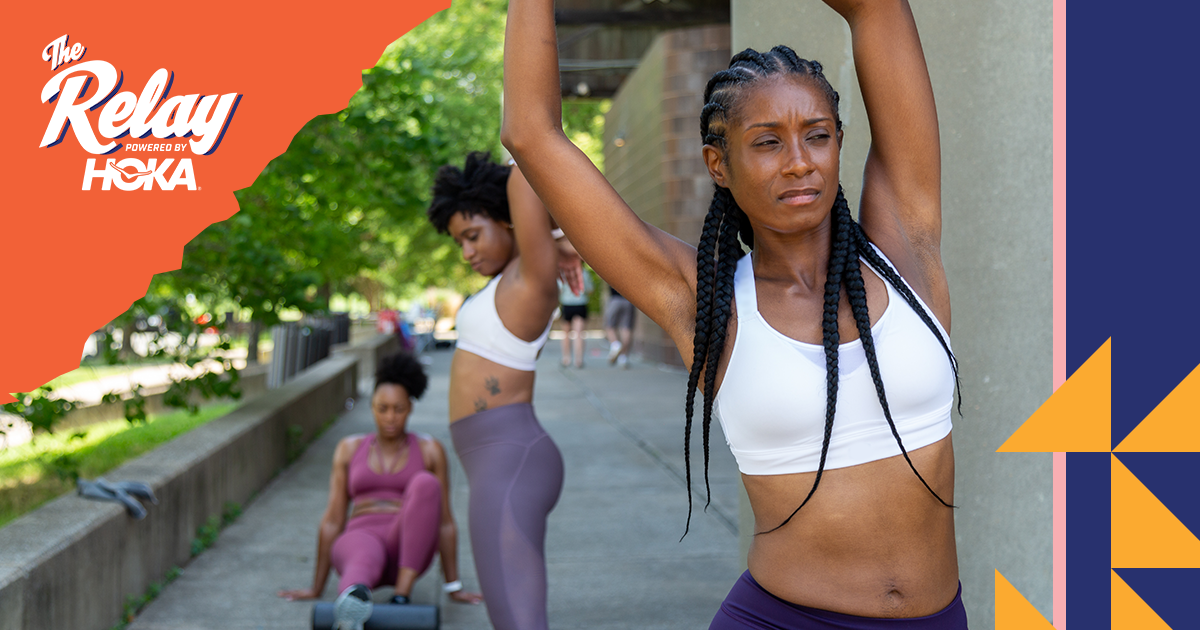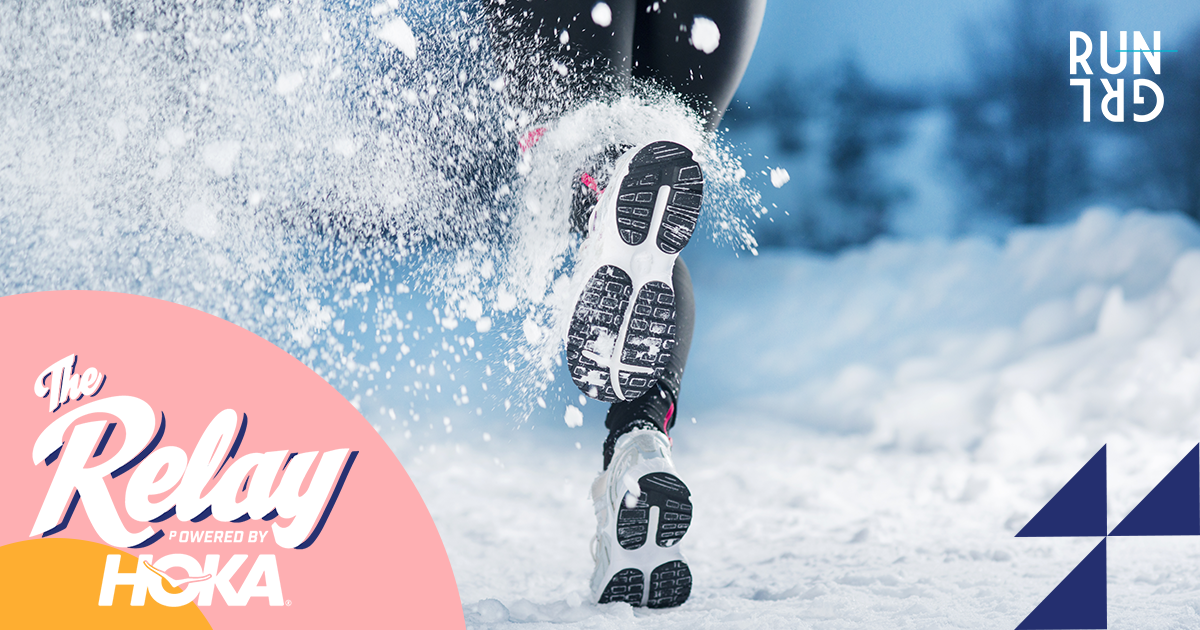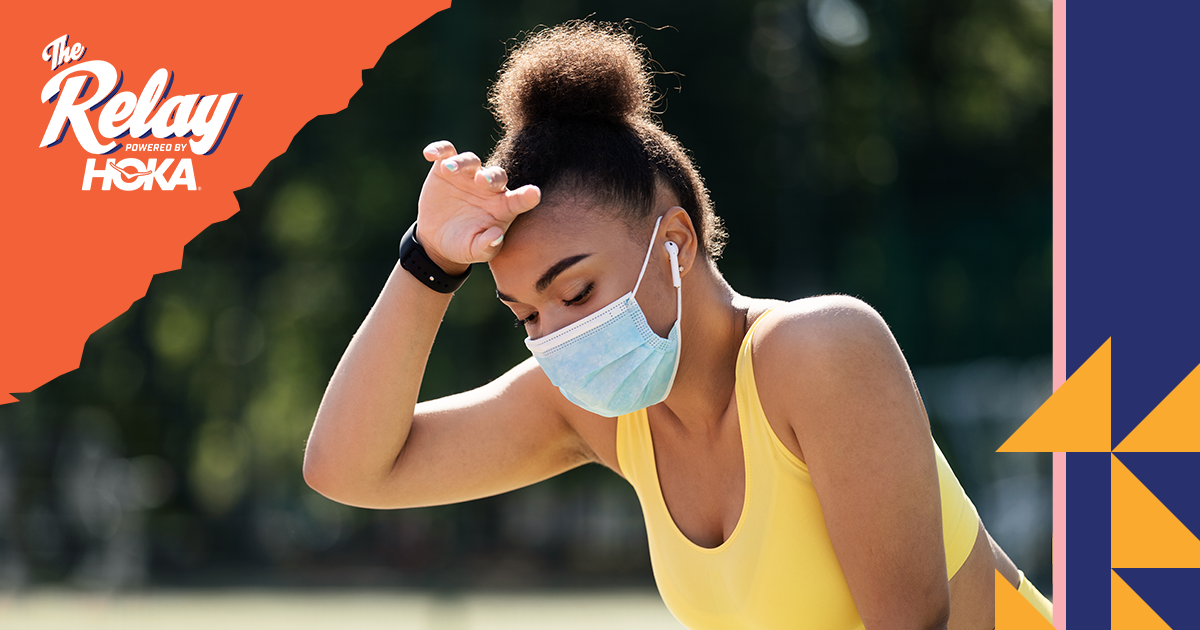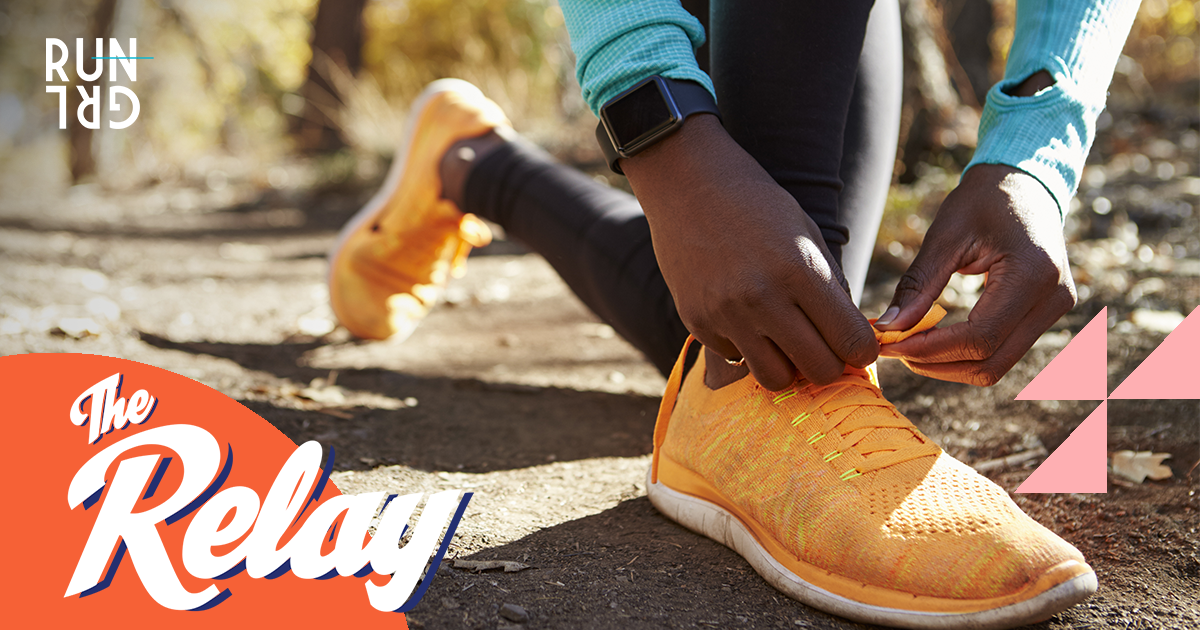The Relay: Tackling Winter-Weather Running
by Nicole Lockhart, Contributor
A little weather never hurt anyone, right? At least, that’s what some of the most dedicated runners will tell you. But as winter gets more severe for those of us in chilly climates, it’s essential to consider how to navigate the changing weather (and when to stay indoors). There’s more than one way to stay safe and active this season. When it comes to conquering the elements, here’s how to weather your next run.
Rain Won’t Go Away?
If you’re not lucky enough to catch a break in the downpour on a rainy day, it’s best to make extra efforts to stay dry when on an outdoor run. Make sure you choose a pair of running shoes that have enough tread-grip to keep you from slipping on any curbs or fallen leaves. Our friends at HOKA suggest a couple of trail running shoes when weather conditions are wet, snowy, or icy.
One of our favorite rain-proof pieces includes the Inlet Jacket as a must-have, preventing even your rainiest runs from being a total wash-out. If you’re running by the road, stand clear of any large puddles that may result in getting splashed by oncoming traffic. When you’ve made it home, change out of wet clothing right away to avoid any blistering or catching a cold. Instead of tossing them in the laundry, leave any damp garments to dry on a rack where they won’t get mild-dewy or dampen other clothes in a hamper.
Fog on the Horizon
The key to safety in all seasons is visibility. This goes for both you as a runner and those around you. From 2002-2012, roughly 1.3 million weather-related vehicle crashes occurred each year in the U.S., on average, according to the Federal Highway Administration. So we advise staying off of significant roadways when visibility is at its lowest. This might be a good time to try a trail run or a treadmill run. For those running outdoors in foggy conditions, try a headlamp to illuminate potential hazards on your path and signal to oncoming persons that someone is up ahead. Reflective clothing is a must, particularly on foggy mornings or evenings when the dark could obscure you from the vision of others.
Let it Snow!
While it’s perfectly acceptable to take a snow day, you may decide to go for a run once the roads are cleared up. Choose a neighborhood or area run where the streets are shoveled and well-cleared for you. As with rainy days, snow days are an excellent time to change gear to protect yourself from the elements. A report from Aston University in Birmingham, UK, found that working out in the cold can increase your immune system, boost your mood during dark, depressing days, and effectively burn more calories. It is also essential to protect your extremities like your ears, hands, and feet with warm accessories. Choose friendly items like a pair of Women’s Apex+ E-tip Gloves, thermal or wool socks, and a Craft Microfleece Shaped Headband.
Ice, Ice Baby
Err on the side of caution here and take a rest day or hop on the treadmill as an alternative. Icy terrain is dangerous for runners. There isn’t a shoe or jacket we can recommend that would protect you from a nasty slip-n-fall. If you’re itching to go for a run after a particularly snowy day, avoid the side streets and take a walk on a major road to inspect the conditions. Main streets are more likely to be cleared and cleaned after inclement weather. You don’t want to end up taking a spill on the local news like this jogger who raved about it being the perfect weather for running. Three words: “Yikes, that hurt!”
Extreme Cold
We get it: you’re a badass who can run no matter what. But isn’t it better to stay healthy to run again next time? Exercising in cold weather can put the body at risk of catching a cold or experiencing hypothermia. While the stats above show some benefits for working out in the cold, we advise noting how cold is too cold for you. At wind chill levels below minus 18 Fahrenheit (-28 Celcius), frostbite can occur on exposed skin in 30 minutes or less.
When preparing for an outdoor run in colder temps, try to resist the urge to layer up too much. “You should feel cold,” says Andy Petranek, a former Red Bull-sponsored adventure racer. “Your base layer should be protecting your skin and the next layer protecting you from the elements.” If you’re up for the challenge, make sure to monitor the forecasts for things like windchill or humidity before going on a freezing run.
You don’t have to battle with the elements all winter long. So check the forecast and prep accordingly before heading outdoors. Know that you can always opt for a rest day or utilize your treadmill if conditions aren’t suitable for outdoor runs. Staying active will require you to change your routine and gear, but we know these tips will keep you moving in the winter months.
Read more from our running coaches and experts in The Relay.
NOTE: MEDICAL DISCLAIMER - NOTE THAT THE ABOVE INFORMATION IS NOT INTENDED AS MEDICAL ADVICE AND DOES NOT REPLACE THE RECOMMENDATION OF A PHYSICIAN OR OTHER MEDICAL PROFESSIONAL. ALWAYS SEEK THE ADVICE OF YOUR PHYSICIAN BEFORE TRYING THESE OR ANY SORT OF WORKOUT PLAN, ESPECIALLY WHILE UNDER TREATMENT FOR YOUR INJURIES. VIEW THE FULL MEDICAL DISCLAIMER IN RUNGRL’S TERMS OF USE.
Nicole Lockhart
Contributor
Nicole Lockhart is a writer and runner living in NYC. She’s run races in support of such organizations as the Black Lives Matter, Leukemia Lymphoma Society, and CaringKing: Athlete's to End Alzheimer's. She is the writer and producer of "All My Black Sons," which debuted at the Harlem International Film Festival in 2016. Her current project, "The Interior Creatures," is a poetry collection written while in quarantine on a 100-year old Corona typewriter.












